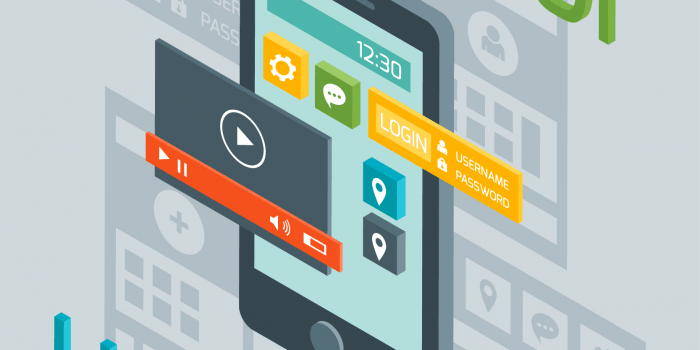

1. Generative AI: The Ultimate Development Partner
Generative AI, based on advanced Large Language Models (LLMs), is transforming software development. Tools such as GitHub Copilot, Replit, and Amazon CodeWhisperer are revolutionizing development workflows through generating code snippets, auto-completing operations, and even detecting flaws. This trend allows engineers to focus on more sophisticated jobs while AI handles tedious or time-consuming parts.
Generative AI techniques evaluate large amounts of open-source code to make intelligent recommendations. Developers can now specify desired features in normal language, and AI generates code snippets based on the requirements. This is very handy for swiftly developing applications and incorporating external APIs.
Replit’s integration with OpenAI’s Codex is an excellent example. A developer may describe a project, such as “a weather app with real-time updates,” and Replit will create an entire program that includes both front-end and back-end components. This has decreased the time needed for developing Minimum Viable Products (MVPs) from weeks to a few hours. Generative AI is also improving design workflows. Designers may construct user interfaces using tools like Figma’s AI-powered plugins, which allow them to provide textual descriptions and quickly visualize concepts. Adobe Firefly is another example, which allows designers to easily develop creative assets.
In 2024, generative AI will improve its contextual knowledge, allowing it to build greater complexity, cross-platform solutions. Developers may expect breakthroughs in AI-generated test cases, evidence, and even real-time communication, making it a must-have tool during the software development process.
2. AI-Driven Automation in DevOps
DevOps has been practically synonymous with automation, but AI is pushing it to the next level. By incorporating machine learning algorithms into pipelines for Continuous Integration and Continuous Delivery, performance monitoring, and incident management, AI-driven development operations improves efficiency, dependability, and scalability.
How AI Is Transforming DevOps:
- Predictive Analysis: Machine learning techniques use previous data to forecast system problems and suggest preventative measures.
- Smarter CI/CD Pipelines: Tools like CircleCI use AI to reduce build times, detect deployment hazards, and automate rollback procedures.
- Self-Healing Systems: AI-powered platforms can automatically detect and repair performance issues, reducing downtime.
Netflix, known for its operational ability, employs a based on artificial intelligence chaos engineering platform. This system replicates faults in their infrastructure in order to ensure its resilience. The AI predicts weaknesses during deployments, allowing organizations to address issues before they affect users. Similarly, Google’s Site Reliability Engineering (SRE) methods use AI to manage large-scale infrastructure.
3. Responsible and Explainable AI: Building Ethical and Transparent Systems
As AI becomes more prevalent in crucial applications such as healthcare, finance, and public safety, the focus on responsible and transparent artificial intelligence has grown. AI developers are now responsible for ensuring that their systems are not only accurate, but also honest, open, and ethical.
AI systems frequently inherit biases from their training data, which could end up in prejudice outcomes. Ensuring justice and transparency is crucial, especially in areas such as hiring, credit scoring, and the enforcement of laws. Developers must use tools and frameworks to discover and minimize biases in AI models.
AlphaFold by Google DeepMind established a standard for responsible AI. Using Explainable AI (XAI) techniques, it provided explicit insights into how it predicted protein structures. This transparency not only improved trust among researchers, but also expedited their adoption in the scientific field.
The increasing need for responsible AI will spur the use of fairness auditing tools and ethical training for developers. The ability to explain will become a regular feature, especially in industries where artificial intelligence choices have a direct influence on human lives. This pattern will also promote greater multidisciplinary collaboration among developers, ethicists, and domain specialists.
4. AI-Powered Personalization: Tailored Experiences at Scale
Personalized is no longer considered a luxury; rather, it is expected. AI-driven personalization is changing the way software applications engage buyers by providing individualized experiences in real time. AI is reinventing how it means to offer user-centric solutions throughout industries such as e-commerce, entertainment, healthcare, and education.
AI algorithms leverage user behavior, preferences, and historical data to determine what they desire. That enables applications to provide highly appropriate material, recommendations, and interactions.
Real-World Applications:
- Spotify’s Discover Weekly: By analyzing user listening habits and preferences, Spotify creates personalized playlists for millions of users each week. In 2024, Spotify aims to leverage generative AI to create unique mixes or mashups tailored to individual tastes.
- EdTech Platforms: Coursera uses AI to design adaptive learning paths, ensuring students receive content aligned with their skill levels and goals. Similarly, Duolingo’s AI-driven features provide personalized exercises based on user performance.
- HealthTech Solutions: Platforms like Livongo use AI to offer personalized health recommendations, such as medication reminders and lifestyle adjustments, based on patient data.
5. Multimodal AI: Unifying Text, Image, and Video Processing
Multimodal AI is the next step in artificial intelligence, allowing systems to process and derive insights from an extensive selection of data formats, including images, audio recordings, and video recordings. The invention opens up new opportunities for developers to construct richer, more entertaining programs.
Multimodal AI models, such as OpenAI’s GPT-4 and Google’s Gemini, combine numerous data varieties, making them adaptable and powerful. In one instance, these models can process a photo, provide a written explanation, and even respond to content-related requests.
Applications in Software Development:
- Content Creation: Tools like Runway AI allow creators to generate video content from text descriptions. For instance, a filmmaker can input “a futuristic cityscape at sunset,” and Runway AI produces a high-quality video based on the prompt.
- Enhanced User Interfaces: Multimodal AI can power interfaces that accept and process complex user inputs, such as voice commands paired with visual gestures.
Artificial intelligence is no longer an utopian concept; it is influencing both the current and future of software development. AI provides endless options for developing intelligent systems, improving workflows, and personalizing user experiences. Knowledge of and acceptance of these trends allows developers to drive innovation, create successful strategies, and stay competitive throughout an increasingly AI-driven environment.





